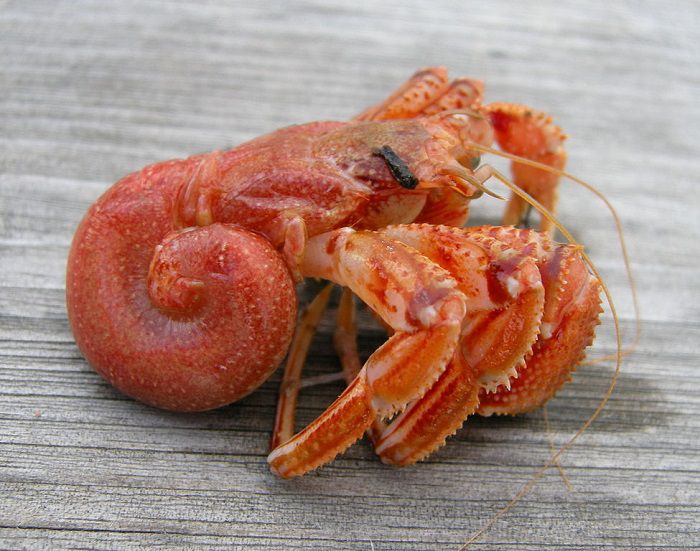Table of Contents
Inexperienced hermit crab owners often fret that their pets are not eating and become worried that they are sick. This is a completely natural reaction and, for the new crab keeper, can be a troublesome time. However, rest assured that in most cases your crab will actually be eating; its just that they not only eat very small amounts, but they also usually eat at night when you are asleep.
How Can I Tell if My Hermit Crabs are Eating?
If you are worried that your hermit crabs are not eating, try smoothing the sand around the food and water. If your crabs are eating during the night, you will likely see their tracks in the sand around the food and water dish the following morning.
are not eating, try smoothing the sand around the food and water. If your crabs are eating during the night, you will likely see their tracks in the sand around the food and water dish the following morning.
As hermit crabs do not usually eat enough for us to notice, it is natural to assume that they are not eating at all but tracks in the sand are a good sign that they have been eating during the night. If, however, you do not see any tracks, then you can assume that your crabs have not been eating. You will then need to figure out why.
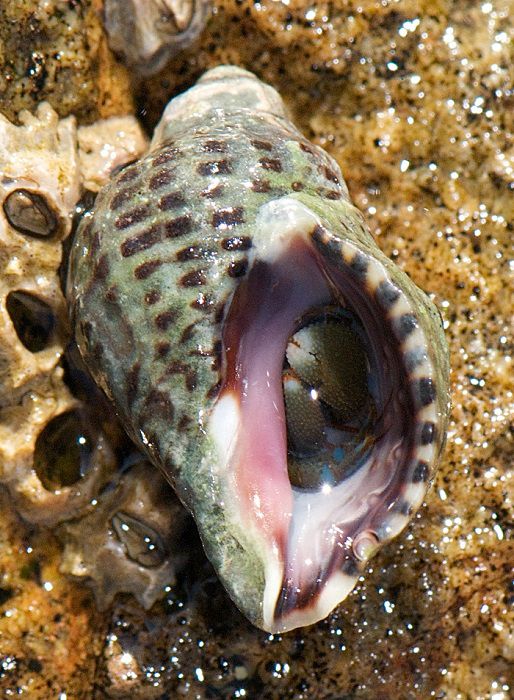
Hermit Crab Retracted Into a Shell 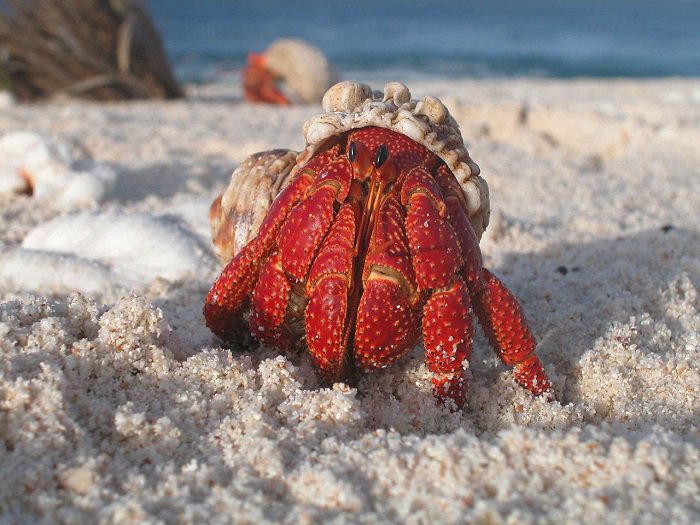
A Hermit Crab Emerging From Shell 
Hermit Crabs Fighting Over a Shell
What If My Crabs are Not Eating?
Hermit crabs can go for up to two weeks without eating while many will store water in their shell to keep them moist and hydrated. There are many reasons why these creatures stop eating. Those that are contented and healthy will eat regularly (even if the amount they do eat is not very noticeable to us humans). Those that are stressed may stop eating for a time. Other reasons for not eating include molting and illness.
Stress
Stress is fairly common in new-to-you hermit crabs and is commonly referred to as post purchase stress, or PPS. Unfortunately, many new crabs die due to the physical stress they have endured before being purchased. Sadly, the harvesting of crabs often results in them being left without adequate food and water and being subjected to temperatures and humidity levels that are completely unsuitable for their wellbeing. This inevitably results in physical stress which many are then unable to recover from and so will die soon after being purchased.
It can take several weeks before PPS will cause the death of a new crab; in that time, it is likely that it will stop eating. If you have a new crab that is not eating, you can try your best to help it recover and settle into its new home by ensuring you carefully monitor temperature and humidity levels as well as by providing constant access to food and water. You should also refrain from disturbing the crab while it acclimatizes.
Molting
A molting crab will typically become very still and will stop eating for a time. There are other signs of molting however, such as cloudy eyes, digging, and an ashy looking exoskeleton.
It can take a few weeks for a hermit crab to fully molt, so it is important that during this time you leave it alone. Disturbing the crab while it is molting could cause unnecessary stress. Once a crab has fully molted, it will eat the exoskeleton for its nutrient benefits.
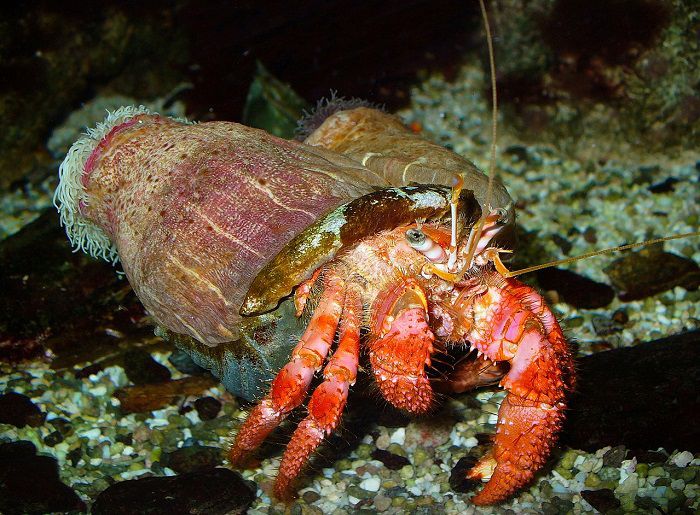
Dardanus calidus 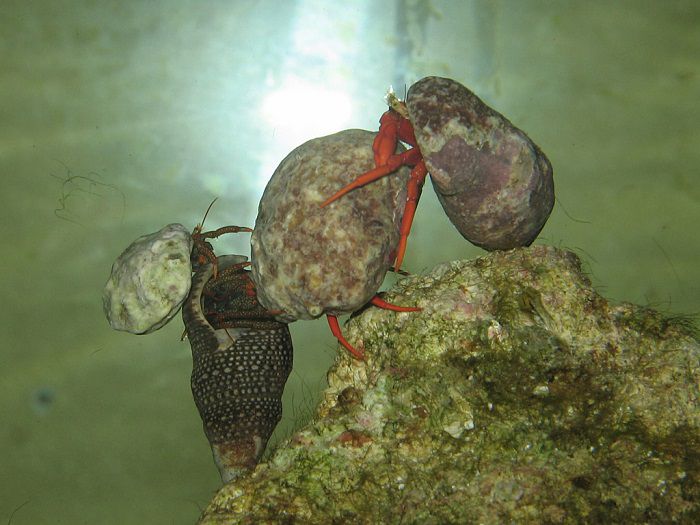
Four Hermit Crabs
Illness
Illness is quite rare in hermit crabs, but it does happen occasionally. It is usually the result of either poor husbandry or a mite infestation. It is important then to ensure the temperature and humidity levels in the tank are both correct and always monitored. Hermit crabs should be kept in temperatures between 72F and 82F with a cool and warm end to allow it to move about and regulate its body temperature. Humidity levels should be between 70 and 80 percent.
Mites are probably one of the main reasons for health problems in hermit crabs, so you will need to check for these. Harmful mites vary in color and will usually attach themselves to the soft parts of the crab’s body. They will sometimes bury into the crab’s gills. If you notice mites on the body of your crab, you should isolate it in another container if you have more than one crab. You will also need to completely clean your crab tank. Be sure to use dechlorinated water after it has been fully cleaned.
Speak to a vet if you are worried about your crab. There are special treatments that can be used to kill a mite infestation that are safe to use in hermit crabs. Your vet will advise you on the correct course of action.
Conclusion
It is natural to worry about a crab that is not eating. Nevertheless, in most cases the crab will actually be eating very small amounts that are not noticeable to you. If you have checked for tracks in the sand around your pet’s food and water dishes and cannot find evidence that it has been eating, you will need to determine the cause.
I would always recommend speaking to a vet if you are worried about the health of your hermit crabs.
Photo Credits:
- Featured Image (Pagurus bernhardus Outside Shell): Arnstein Rønning
 – CC BY 3.0
– CC BY 3.0
- Four Hermit Crabs: Drcbc – CC BY 3.0

- Hermit Crabs Fighting Over a Shell: Brocken Inaglory
 – CC BY 3.0
– CC BY 3.0
- A Hermit Crab Emerging From Shell: U.S. Fish and Wildlife Service – public domain
- Dardanus calidus: H. Zell
 – CC BY 3.0
– CC BY 3.0
- Hermit Crab Retracted Into a Shell: Jerry Kirkhart
 – CC BY 2.0
– CC BY 2.0

